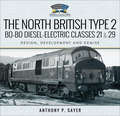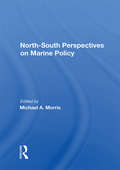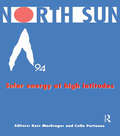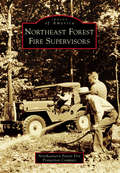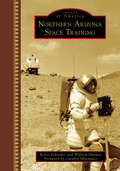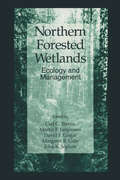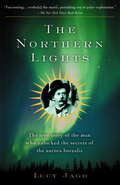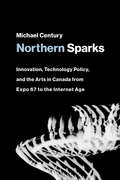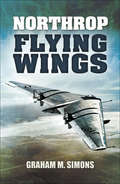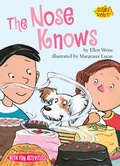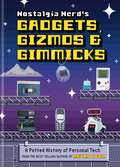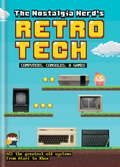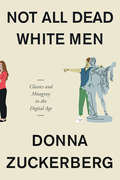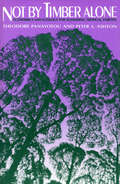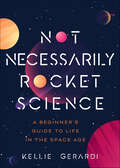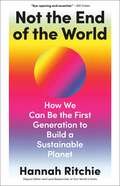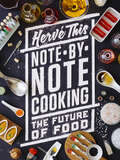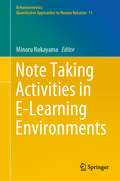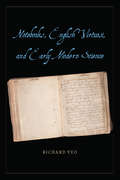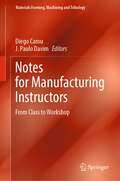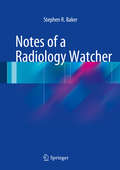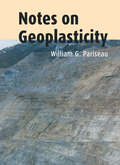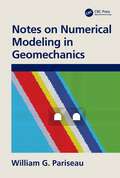- Table View
- List View
The North British Type 2 Bo-Bo Diesel-Electric Classes 21 & 29: Design, Development and Demise (Locomotive Portfolios)
by Anthony P. SayerThis comprehensive history of these unique locomotives covers everything from performance issues to sightings, detail differences and liveries. The Type 2 Bo-Bo Diesel-Electric Classes 21 & 29 locomotives were constructed by the North British Locomotive Company in the early 1960s. Used in the Scottish region of British Railway, they ran into numerous problems and were withdrawn from service within a decade. Due in part to their short careers, these locomotives remain something of a mystery to train enthusiasts. The scant information available on them is very often riddled with misinformation. This authoritative volume corrects the record, presenting the most comprehensive and accurate account of the NBL Classes 21 & 29. Fully illustrated with photographs and detailed line drawings, this volume offers individual locomotive histories, complete technical specifications, accident and fire damage reports, storage histories, and a complete account of their disposal at both private companies and Glasgow Works.
North-south Perspectives On Marine Policy
by Michael A. MorrisThis book aspires to contribute to greater understanding of three major perspectives on marine policy: developed states' perspectives, developing states' perspectives, and interaction between first and second perspectives or North-South perspectives.
North Sun '94: Solar Energy at High Latitudes
by Kerr McGregorContains 69 papers presented at the North Sun conference held in Glasgow from 7-9 September 1994. The contributions include sections on: solar water heating; active solar heating; photovoltaic applications; solar modelling and design tools; solar buildings; and policy and implementation.
Northeast Forest Fire Supervisors (Images of America)
by Northeastern Forest CompactControlling wildfires has been a significant mission for the state and federal governments since the early 1900s. During this time, the agencies responsible for wildland fire management have worked jointly in many ways to minimize losses from fires and to constantly improve firefighting and fire management techniques. In 1967, a new organization was established among the 20 states within the northeastern area of the United States to unite the forest fire control supervisors from each of those states. Since then, the Northeast Forest Fire Supervisors have been charged with the responsibility to stimulate and promote the development and use of specialized forest fire equipment, including better techniques in fire prevention, presuppression, suppression, and improved training and safety methods.
Northern Arizona Space Training (Images of America)
by William Sheehan Kevin Schindler Foreword By ShoemakerDuring the 1960s and early 1970s, northern Arizona played a critical role in fulfilling President Kennedy’s bold challenge of sending humans to the moon. From the rocky depths of the Grand Canyon to lofty cosmic views from Flagstaff’s dark skies, northern Arizona was ideal for activities ranging from moon buggy testing and geology training to lunar mapping and mission simulation. Every astronaut who walked on the moon, from Neil Armstrong to Gene Cernan, prepared for his journey in northern Arizona, and all used maps created by Flagstaff artists to navigate their way around the lunar surface. This book captures the spirit of these pioneers with stunning images from NASA, the US Geological Survey, and others.
Northern Forested Wetlands Ecology and Management
by Carl C. TrettinForested wetlands are a major component of northern landscapes, important both for their ecological functions and their socioeconomic values. Historically, these lands have been used for timber and fiber products, hunting, fishing, trapping, food gathering, and recreation. There are many questions about the use and management of these lands in the future, particularly with respect to forest products, hydrology and water quality, plant and wildlife ecology, landscape dynamics, and wetland restoration. Northern Forested Wetlands: Ecology and Management provides a synthesis of current research and literature. It examines the status, distribution, and use of these wetland resources. The book focuses on understanding the role of wetlands in the landscape and on how to manage these wetlands and sustain their important functions. This is a primary reference text for the study and management of northern forested wetlands, providing a forum for information discovered by researchers and managers from many nations.
The Northern Lights: The True Story Of The Man Who Unlocked the Secrets of the Aurora Borealis
by Lucy JagoScience, biography, and arctic exploration coverage in this extraordinary true story of the life and work of Norwegian scientist Kristian Birkeland, the troubled genius who solved the mysteries of one of nature's most spectacular displays. Captivated by the otherworldly lights of the aurora borealis, Birkeland embarked on a lifelong quest to discover their cause. His pursuit took him to some of the most forbidding landscapes on earth, from the remote snowcapped mountains of Norway to the war-torn deserts of Africa. In the face of rebuke by the scientific establishment, sabotage by a jealous rival, and his own battles with depression and paranoia, Birkeland remained steadfast. Although ultimately vindicated, his theories were unheralded-and his hopes for the Nobel Prize scuttled-at the time of his suspicious death in 1917. The Northern Lightsoffers a brilliant account of the physics behind the aurora borealis and a rare look inside the mind of one of history's most visionary scientists.
Northern Sparks: Innovation, Technology Policy, and the Arts in Canada from Expo 67 to the Intern et Age (Leonardo)
by Michael CenturyAn &“episode of light&” in Canada sparked by Expo 67 when new art forms, innovative technologies, and novel institutional and policy frameworks emerged together.Understanding how experimental art catalyzes technological innovation is often prized yet typically reduced to the magic formula of &“creativity.&” In Northern Sparks, Michael Century emphasizes the role of policy and institutions by showing how novel art forms and media technologies in Canada emerged during a period of political and social reinvention, starting in the 1960s with the energies unleashed by Expo 67. Debunking conventional wisdom, Century reclaims innovation from both its present-day devotees and detractors by revealing how experimental artists critically challenge as well as discover and extend the capacities of new technologies.Century offers a series of detailed cross-media case studies that illustrate the cross-fertilization of art, technology, and policy. These cases span animation, music, sound art and acoustic ecology, cybernetic cinema, interactive installation art, virtual reality, telecommunications art, software applications, and the emergent metadiscipline of human-computer interaction. They include Norman McLaren&’s &“proto-computational&” film animations; projects in which the computer itself became an agent, as in computer-aided musical composition and choreography; an ill-fated government foray into interactive networking, the videotext system Telidon; and the beginnings of virtual reality at the Banff Centre. Century shows how Canadian artists approached new media technologies as malleable creative materials, while Canada undertook a political reinvention alongside its centennial celebrations. Northern Sparks offers a uniquely nuanced account of innovation in art and technology illuminated by critical policy analysis.
Northrop Flying Wings
by Graham M. SimonsThe aviation historian and author of Memphis Belle presents an authoritative analysis of the groundbreaking, post-WWI series of military aircraft. In the years following the First World War, a new imperative arose in aviation technology: stealth, speed, and precision. American aircraft designer Jack Northrop developed a streamlined craft that did away with superfluous appendages, including the weighty fuselage and tail units. This was an extreme measure, but Northrop was determined to push aircraft design to a new level. Eliminating both the fuselage and tail meant placing the pilot, the engines, and the payload entirely within the wing envelope. The resulting craft, Northrop&’s flying wings, were some of the most spectacular machines ever to grace the skies. With barely any vertical surfaces at all, they looked like something from the realm of science fiction. Indeed, one even appeared in the film version of H.G. Wells&’ War of the Worlds. Written off by many as a mere novelty, the development of these unique bombers provided aeronautical innovations that paved the way for a raft of new designs. During the 1970s, when the United States needed a new strategic bomber to replace the B-52 Superfortress, the flying wing design was brought to the fore once again. The B-2 Spirit was born out of this, continuing the legacy of this stealthy design. This craft, along with the B-35, the eight-engined YB-49 and the YRB-49A, are all highlighted in this authoritative history. Detailed analyses of each design, set within a wider historical context, make for a compelling record of this landmark design.
The Nose Knows (Science Solves It!)
by Ellen WeissA Parent's Choice Recommended BookSolve kid-sized dilemmas and mysteries with the Science Solves It! series. These fun books for kids ages 5–8 blend clever stories with real-life science. Why did the dog turn green? Can you control a hiccup? Is that a UFO? Find the answers to these questions and more as kid characters dive into physical, life, and earth sciences. Everyone in the family has a cold - except Peter. Who will sniff out the funny smells? By default, Peter becomes the family nose - until he, too, catches a cold. Books in this perfect STEM series will help kids think like scientists and get ahead in the classroom. Activities and experiments are included in every book! (Level One; Science topic: Sense of Smell)
Nostalgia Nerd's Gadgets, Gizmos & Gimmicks: A Potted History of Personal Tech
by Peter LeighIn this eagerly-awaited new book from the author of the best-selling Nostalgia Nerd's Retro Tech, Peter Leigh takes a fun, informative and irreverent romp through the history of more than forty pieces of personal tech, charting the successes, failures and oddities from over five decades of our obsession with gadgetry.From the Teasmade to the TomTom, mankind has been on a constant hunt for gimmicks that make life easier, faster and more entertaining, and as yesterday's 'must-haves' become today's museum pieces, there's no better time to take a nostalgic trip through tech's back catalogue.
Nostalgia Nerd's Gadgets, Gizmos & Gimmicks: A Potted History of Personal Tech
by Peter LeighIn this eagerly-awaited new book from the author of the best-selling Nostalgia Nerd's Retro Tech, Peter Leigh takes a fun, informative and irreverent romp through the history of more than forty pieces of personal tech, charting the successes, failures and oddities from over five decades of our obsession with gadgetry.From the Teasmade to the TomTom, mankind has been on a constant hunt for gimmicks that make life easier, faster and more entertaining, and as yesterday's 'must-haves' become today's museum pieces, there's no better time to take a nostalgic trip through tech's back catalogue.
The Nostalgia Nerd's Retro Tech: Computer, Consoles & Games (Tech Classics)
by Peter LeighRemember what a wild frontier the early days of home gaming were? Manufacturers releasing new consoles at a breakneck pace; developers creating games that kept us up all night, then going bankrupt the next day; and what self-respecting kid didn't beg their parents for an Atari or a Nintendo? This explosion of computers, consoles, and games was genuinely unlike anything the tech world has seen before or since.This thoroughly researched and geeky trip down memory lane pulls together the most entertaining stories from this dynamic era, and brings you the classic tech that should never be forgotten.
Not All Dead White Men: Classics and Misogyny in the Digital Age
by Donna ZuckerbergSome of the most controversial and consequential debates about the legacy of the ancients are raging not in universities but online, where alt-right men’s groups deploy ancient sources to justify misogyny and a return of antifeminist masculinity. Donna Zuckerberg dives deep to take a look at this unexpected reanimation of the Classical tradition.
Not by Timber Alone: Economics And Ecology For Sustaining Tropical Forests
by Theodore Panayotou Peter AshtonNot by Timber Alone presents the findings of the Harvard Institute for International Development study, commissioned by the International Tropical Timber Organization, that examined the economic value of tropical hardwood forests as productive living systems and the potential for their multiple use management.
Not Necessarily Rocket Science: A Beginner's Guide to Life in the Space Age
by Kellie GerardiFollow one woman&’s non-traditional path in the space industry as she guides and encourages anyone who has ever dreamed about life in outer space. In this candid science memoir and career guide, aerospace science professional Kellie Gerardi offers an inside look into the industry beginning to eclipse Silicon Valley. Whether you have a space science degree or are looking to learn about stars and the solar system, Not Necessarily Rocket Science proves there&’s room for anyone who is passionate about exploration. With a space background and a mission to democratize access to space, this female astronaut candidate offers a front row seat to the final frontier. From her adventures training for Mars to testing spacesuits in microgravity, this unique handbook provides inspiration and guidance for aspiring astronauts everywhere. Look inside for answers to questions like: Will there be beer on Mars? Why do I need to do one-handed pushups in microgravity? How can I possibly lose a fortune in outer space? Praise for Not Necessarily Rocket Science &“Blasts readers onto a rocket-fueled journey through space and time, the perfect primer for the next space age.&”―Zara Stone, author of The Future of Science is Female &“Kellie is probably one of the best ambassadors for spaceflight in the 21st century that the industry could have.&”―Lucy Hawking, author of George&’s Secret Key to the Universe and host of Audible&’s Lucy in the Sky. &“Unique and compelling…will appeal to anyone whose dreams are larger than the limitations others try to wrap them in. Gerardi is informed, inspiring, and full of humanity, as she takes readers on a personal journey into what it means to be a fully signed-up member of the space age. A must-read for space-dreamers everywhere!&”―Andrew Maynard, Author of Future Rising &“Space may seem like a pretty intimidating place, open only to fighter pilots or brilliant engineers. But if humans are to ever settle worlds beyond Earth, it will take all kinds to make a society. That's where Not Necessarily Rocket Science comes in―a book that makes space accessible and fun, while showing readers where the front door is…. Kellie Gerardi deftly offers a sampling of the possible careers in space while helping those who are intrigued find their own pathway. Space needs more engineers, sure. But as Gerardi ably writes, it needs poets too.&”―Eric Berger, senior space editor at Ars Technica
Not the End of the World: How We Can Be the First Generation to Build a Sustainable Planet
by Hannah RitchieThis "eye-opening and essential" book (Bill Gates) will transform how you see our biggest environmental problems—and explains how we can solve them. It&’s become common to tell kids that they&’re going to die from climate change. We are constantly bombarded by doomsday headlines that tell us the soil won&’t be able to support crops, fish will vanish from our oceans, and that we should reconsider having children. But in this bold, radically hopeful book, data scientist Hannah Ritchie argues that if we zoom out, a very different picture emerges. In fact, the data shows we&’ve made so much progress on these problems that we could be on track to achieve true sustainability for the first time in human history. Did you know that: Carbon emissions per capita are actually down Deforestation peaked back in the 1980s The air we breathe now is vastly improved from centuries ago And more people died from natural disasters a hundred years ago? Packed with the latest research, practical guidance, and enlightening graphics, this book will make you rethink almost everything you&’ve been told about the environment. Not the End of the World will give you the tools to understand our current crisis and make lifestyle changes that actually have an impact. Hannah cuts through the noise by outlining what works, what doesn&’t, and what we urgently need to focus on so we can leave a sustainable planet for future generations. These problems are big. But they are solvable. We are not doomed. We can build a better future for everyone. Let&’s turn that opportunity into reality.
Not Your Mother's Make-Ahead and Freeze Cookbook
by Jessica FisherFisher serves up more than 250 recipes for delectable breakfasts, lunches, and dinners with the secret weapon of “batch cooking”, which saves both time and money. <P><P>This cookbook puts a modern spin on the age-old idea of freezing meals for later, and appeals to today's diverse tastes.
Note-by-Note Cooking: The Future of Food (Arts and Traditions of the Table: Perspectives on Culinary History)
by Hervé ThisNote-by-Note Cooking is a landmark in the annals of gastronomy, liberating cooks from the constraints of traditional ingredients and methods through the use of pure molecular compounds. 1-Octen-3-ol, which has a scent of wild mushrooms; limonene, a colorless liquid hydrocarbon that has the smell of citrus; sotolon, whose fragrance at high concentrations resembles curry and at low concentrations, maple syrup or sugar; tyrosine, an odorless but flavorful amino acid present in cheese—these and many other substances, some occurring in nature, some synthesized in the laboratory, make it possible to create novel tastes and flavors in the same way that elementary sound waves can be combined to create new sounds. Note-by-note cooking promises to add unadulterated nutritional value to dishes of all kinds, actually improving upon the health benefits of so-called natural foods. Cooking with molecular compounds will be far more energy efficient and environmentally sustainable than traditional techniques of cooking. This new way of thinking about food heralds a phase of culinary evolution on which the long-term survival of a growing human population depends. Hervé This clearly explains the properties of naturally occurring and synthesized compounds, dispels a host of misconceptions about the place of chemistry in cooking, and shows why note-by-note cooking is an obvious—and inevitable—extension of his earlier pioneering work in molecular gastronomy. An appendix contains a representative selection of recipes, vividly illustrated in color.
Note Taking Activities in E-Learning Environments (Behaviormetrics: Quantitative Approaches to Human Behavior #11)
by Minoru NakayamaThe main focus of this book is presenting practical procedures for improving learning effectiveness using note taking activities during e-learning courses. Although presentation of e-learning activities recently has been spreading to various education sectors, some practical problems have been discussed such as evaluation of learning performance and encouragement of students. The authors introduce note taking activity as a conventional learning tool in order to promote individual learning activity and learning efficacy. The effectiveness of note taking has been measured in practical teaching in a Japanese university using techniques of learning analytics, and the results are shown here. The relationships between note taking activity and students’ characteristics, the possibility of predicting the final learning performance using metrics of students’ note taking, and the effectiveness for individual emotional learning factors are evaluated. Some differences between blended learning and fully online learning courses are also discussed. The authors provide novel analytical procedures and ideas to manage e-learning courses. In particular, the assessment of note taking activity may help to track individual learning progress and to encourage learning motivation.
Notebooks, English Virtuosi, and Early Modern Science
by Richard YeoIn Notebooks, English Virtuosi, and Early Modern Science, Richard Yeo interprets a relatively unexplored set of primary archival sources: the notes and notebooks of some of the leading figures of the Scientific Revolution. Notebooks were important to several key members of the Royal Society of London, including Robert Boyle, John Evelyn, Robert Hooke, John Locke, and others, who drew on Renaissance humanist techniques of excerpting from texts to build storehouses of proverbs, maxims, quotations, and other material in personal notebooks, or commonplace books. Yeo shows that these men appreciated the value of their own notes both as powerful tools for personal recollection, and, following Francis Bacon, as a system of precise record keeping from which they could retrieve large quantities of detailed information for collaboration. The virtuosi of the seventeenth century were also able to reach beyond Bacon and the humanists, drawing inspiration from the ancient Hippocratic medical tradition and its emphasis on the gradual accumulation of information over time. By reflecting on the interaction of memory, notebooks, and other records, Yeo argues, the English virtuosi shaped an ethos of long-term empirical scientific inquiry.
Notes for Manufacturing Instructors: From Class to Workshop (Materials Forming, Machining and Tribology)
by Diego Carou J. Paulo DavimThis book offers an extensive guide to the most engaging computer and laboratory sessions for teaching manufacturing engineering topics. It serves as a valuable resource for educators in planning their practical coursework. The book comprises 14 chapters covering a wide range of subjects, including design and simulations, various manufacturing processes such as additive manufacturing, injection molding, forming, machining, casting, and non-conventional machining, as well as process monitoring, metrology, and inspection using computed tomography. It also explores the application of methodologies like the design of experiments and machine learning. These contributions enable both lecturers and students to apply manufacturing engineering theory in real-world scenarios, drawing from the best practices developed in engineering institutions worldwide.
Notes of a Radiology Watcher
by Stephen R. BakerThe Radiology Department is a pivotal part of any acute and/or comprehensive health care facility. The radiologist can no longer just "hide out" there. Matters of imaging are often public concerns, larger in scope than just the scheduling and managing of a series of image tests. Rather radiology is expensive, often intrusive and in some areas earnestly and endlessly controversial. A radiologist must be attuned to these often confounding contingencies. Two recent developments in the monitoring of education of radiologists can be impacted by the content of this book. For trainees in Radiology, and for that matter, for all trainees in every medical specialty in the U. S. , a new accreditation system (NAS) has been put into place under the impetus and aegis of the ACGME, the Accreditation Committee for Graduate Medical Education, the body responsible for graduate medical evaluation and oversight in the U. S. Among its many innovations, the NAS curriculum is concerned with knowledge acquired about social and economic issues pertinent to each specialty. It is also focused on improving communication skills and about enhancing quality and safety. In the elaboration of "milestones" for residency education in these issues are codified into focused initiatives that must be addressed by each trainee as he or she advances in capability and seniority within the training interval.
Notes on Geoplasticity
by William G. PariseauThis book is about geoplasticity, solid mechanics of rock, jointed rock and soil beyond the domain of a purely elastic deformation. Plastic deformation is irreversible and begins at the limit to elasticity with any attempt at further loading. Stress at the limit to elasticity is "strength" which is described by a functional relationship amongst stresses, that is, by a yield function or failure criterion. Mohr-Coulomb, Drucker-Prager and Hoek-Brown criteria are well-known examples in geomechanics. Beyond the elastic limit, but still within the realm of small strain increments, a total strain increment is the sum of an elastic increment and a plastic increment. The elastic increment is computed through an incremental form of Hooke’s law, isotropic or anisotropic as the case may be. Computation of the plastic part is at the core of any plasticity theory and is approached through the concept of a plastic potential. The plastic potential is a function of stresses and perhaps other material parameters such as plastic strain and temperature. Derivatives of the plastic potential with respect to stress lead to the plastic part of the total strain increment. If the yield criterion and plastic potential are the same, then the plastic stress-strain relationships are "associated rules of flow" and follow a "normality" principle. Normality is in reference to a graphical portrayal in principal stress space where the plastic strain increment is perpendicular to the yield surface. If the plastic potential and yield criterion are different, as is often the case in geoplasticity, then the rules of flow are "non-associated". Drucker’s famous stability postulate implies normality at a smooth point on the yield surface, convexity of the yield function and other important features of plasticity theory in geomechanics. However, there is no point to proceeding to theoretical analyses without physical justification. Hence, the physical foundations for application of plasticity theory to rock, jointed rock and soil are examined in Chapter 2 of this book. A brief review of continuum mechanics principles is given in Chapter 3. Chapter 4 focuses on plane plastic strain and "sliplines". The technical literature is replete with numerous diagrams of sliplines, especially in discussions of foundations on soils, but the relevant mathematics is often lacking and with it genuine understanding. Examples illustrate application of theory to traditional geomechanics problems such as computation of retaining wall forces in soils, foundation bearing capacity of soil and rock, wedge penetration of rock under confining pressure and others. Brief discussions of anisotropy, visco-plasticity and poro-plasticity are presented in Chapters 6, 7 and 8. This book will be of interest to civil, geological and mining engineers, particularly those involved in reliable design of excavations and foundations beyond elasticity, especially in jointed rock.
Notes on Numerical Modeling in Geomechanics
by William G. PariseauThis book is an introduction to numerical analysis in geomechanics and is intended for advanced undergraduate and beginning graduate study of the mechanics of porous, jointed rocks and soils. Although familiarity with the concepts of stress, strain and so on is assumed, a review of the fundamentals of solid mechanics including concepts of physical laws, kinematics and material laws is presented in an appendix. Emphasis is on the popular finite element method but brief explanations of the boundary element method, the distinct element method (also known as the discrete element method) and discontinuous deformation analysis are included. Familiarity with a computer programming language such as Fortran, C++ or Python is not required, although programming excerpts in Fortran are presented at the end of some chapters. This work begins with an intuitive approach to interpolation over a triangular element and thus avoids making the simple complex by not doing energy minimization via a calculus of variations approach so often found in reference books on the finite element method. The presentation then proceeds to a principal of virtual work via the well-known divergence theorem to obtain element equilibrium and then global equilibrium, both expressed as stiffness equations relating force to displacement. Solution methods for the finite element approach including elimination and iteration methods are discussed. Hydro-mechanical coupling is described and extension of the finite element method to accommodate fluid flow in porous geological media is made. Example problems illustrate important concepts throughout the text. Additional problems for a 15-week course of study are presented in an appendix; solutions are given in another appendix.
